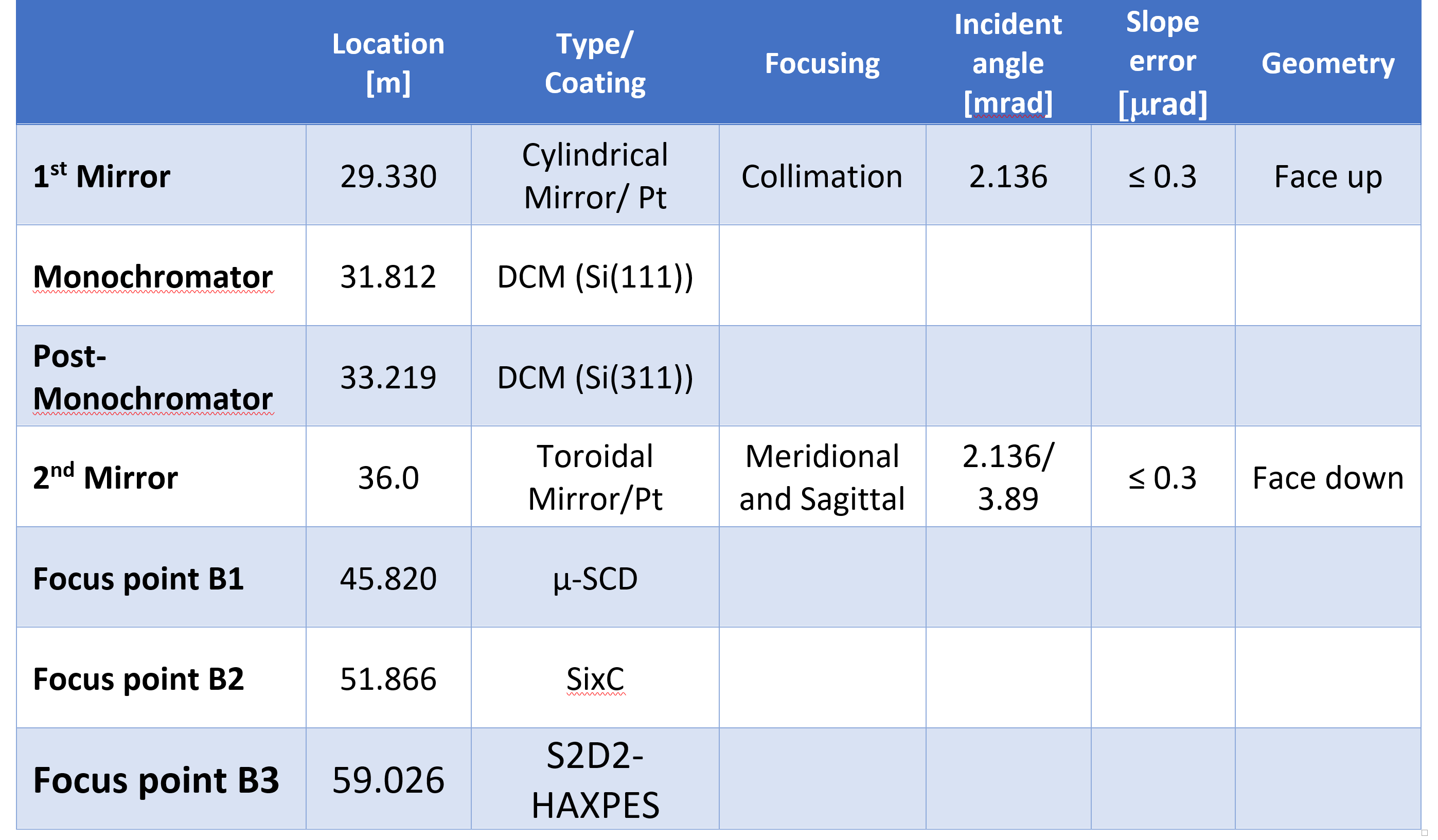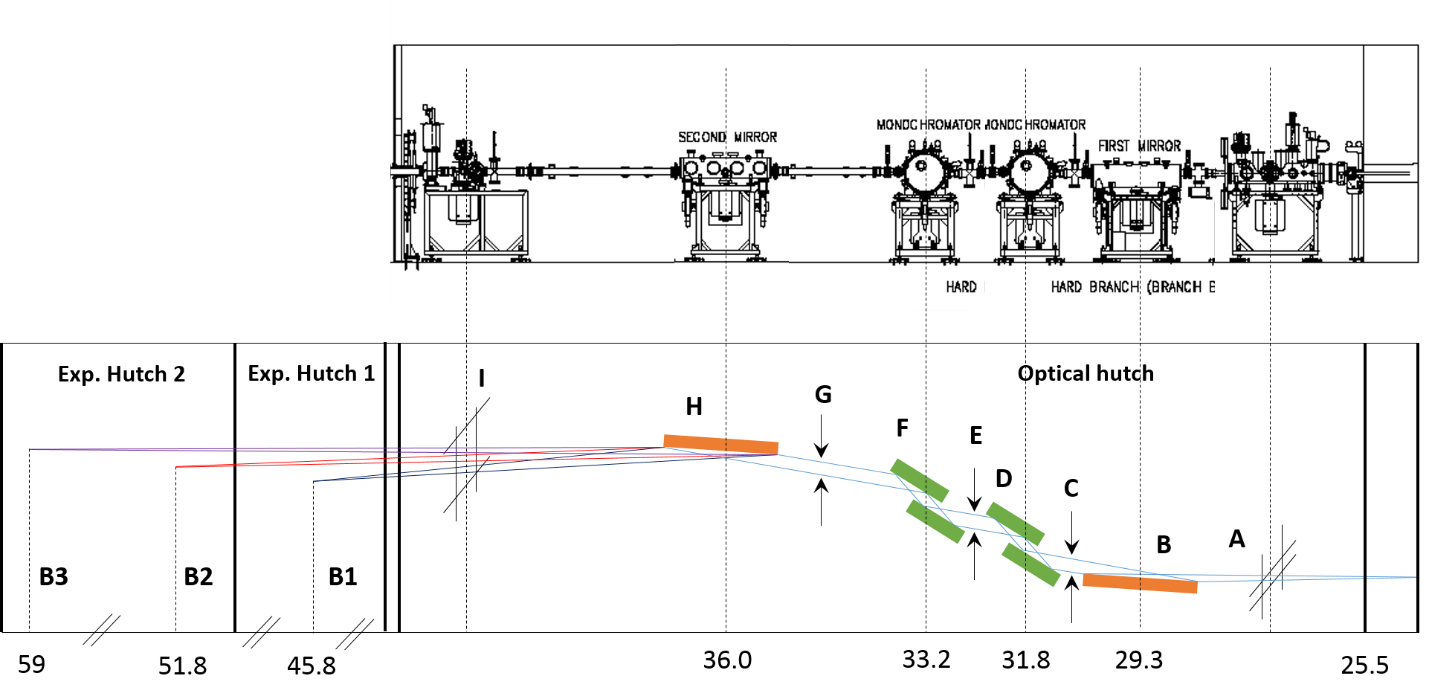Optical Hutch
Optical hutch
The optical layout is basically composed of six elements, i) Primary Slits, ii) Collimating white beam Mirror, iii) Double Crystal Monochromator, iv) High-Resoltion Post-Monochromator, v) Toroidal Focusing Mirror, and vi) Secondary Slits. Following table resume the characteristic prameter from the BM25 optic.

The beamline optics accept the 1.8 mrad horizontal radiation and produce a small focal spot at different positions (B1, B2, and B3) in the experimental hutches (EH1 and EH2). The first mirror is collimator and is located before the monochromator beamstream. The figure shows schematically the chosen design. The horizontal focusing is achieved by the toroidal second mirror M2. For focusing in the meridional plane the cylindrical bent mirror is used. The vacuum of the main components is separated by fixed Be Windows. The main function of the first mirror is to reject the higher order harmonics and produce a non dispersive optical setting. Since a Pt coating is used, in normal operation, the glancing angle is ~ 2.136 mrad, which corresponds to a cut-off energy of 39.5 keV. A pseudo channel-cut type monochromator is used. Two Si(111) crystals are used and they rotate by a single table, in the (+n,-n) configuration. A post-monochromator based on the same Main monochromator design of channel-cut type is in tanden with the main monochromador for High Energy X-ray Photoelectron Spectroscopy.

Schematic representation of beam path for the configuration of Branch B. Dimensions are given in millimeters.



